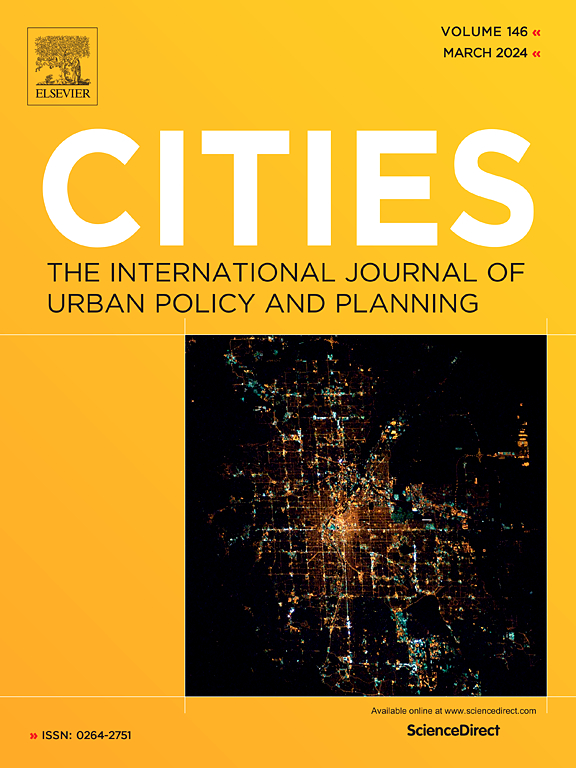Integrating ecosystem service bundles and scenario predicting for win-win sustainable urban management: A case study of typical arid cities in China
IF 6
1区 经济学
Q1 URBAN STUDIES
引用次数: 0
Abstract
Exploring the ecological effects of urbanization from the perspective of ecosystem service (ES) relationships aids in developing precise spatial decisions for sustainable ecological management. The objective of this paper is to investigate the impact of urbanization on ES bundles (ESBs) and their internal dynamics through scenario simulations. Future land use changes were modelled under three scenarios, with a particular focus on characteristics of urban expansion. Spatial mapping and statistical analysis were employed to quantify changes in six ESs and their interrelationships. The results confirm that urban expansion is the most significant form of land use change in Hohhot, with a 20.57 % expansion under the natural scenario. Urban land distribution mainly follows an edge expansion pattern, shifting northward with decreasing spatial dispersion. Significant differences in ES losses were observed across scenarios. Nonetheless, all ecosystem combinations produce five types of ESBs, generally with similar structural characteristics. The area of urban expansion bundles under the food security scenario is only 2736.77 km2. The conversion of cropland, forest, and grassland by urban expansion has transformed the ecological agriculture, forestry recreation, and comprehensive service bundles into other ESBs. Additionally, all-wins zone, weaknesses zone, ES-enhancing zone, and trade-off mitigating zone during urban expansion are delineated from a two-dimensional assessment of total value and relationships. Combining partition with ESB identification, this study considers both delivery characteristics to enhance ecological supply capacity and dyadic relationships to mitigate trade-offs, which develops more targeted ecosystem management and urban sustainability strategies for other regions.
整合生态系统服务包与情景预测——以中国典型干旱城市为例
从生态系统服务关系的角度探讨城市化的生态效应有助于制定可持续生态管理的精确空间决策。本文的目的是通过情景模拟研究城市化对ES束的影响及其内部动态。未来土地利用变化在三种情景下进行建模,特别关注城市扩张的特征。采用空间制图和统计分析方法量化6种ESs的变化及其相互关系。结果表明,城市扩张是呼和浩特市土地利用变化最显著的形式,自然情景下城市扩张幅度为20.57%。城市用地分布以边缘扩张为主,向北移动,空间分散程度减小。在不同情况下观察到ES损失的显著差异。尽管如此,所有的生态系统组合都会产生五种类型的esb,通常具有相似的结构特征。粮食安全情景下城市扩张束面积仅为2736.77 km2。城市扩张对耕地、森林、草地的改造,将生态农业、林业游憩、综合服务捆绑转化为其他ESBs。在此基础上,从总体价值和相互关系的角度划分了城市扩张过程中的双赢区、弱势区、es增强区和权衡缓和区。结合划分和ESB识别,本研究考虑了提高生态供应能力的交付特征和减少权衡的二元关系,从而为其他地区制定更有针对性的生态系统管理和城市可持续发展战略。
本文章由计算机程序翻译,如有差异,请以英文原文为准。
求助全文
约1分钟内获得全文
求助全文
来源期刊

Cities
URBAN STUDIES-
CiteScore
11.20
自引率
9.00%
发文量
517
期刊介绍:
Cities offers a comprehensive range of articles on all aspects of urban policy. It provides an international and interdisciplinary platform for the exchange of ideas and information between urban planners and policy makers from national and local government, non-government organizations, academia and consultancy. The primary aims of the journal are to analyse and assess past and present urban development and management as a reflection of effective, ineffective and non-existent planning policies; and the promotion of the implementation of appropriate urban policies in both the developed and the developing world.
 求助内容:
求助内容: 应助结果提醒方式:
应助结果提醒方式:


